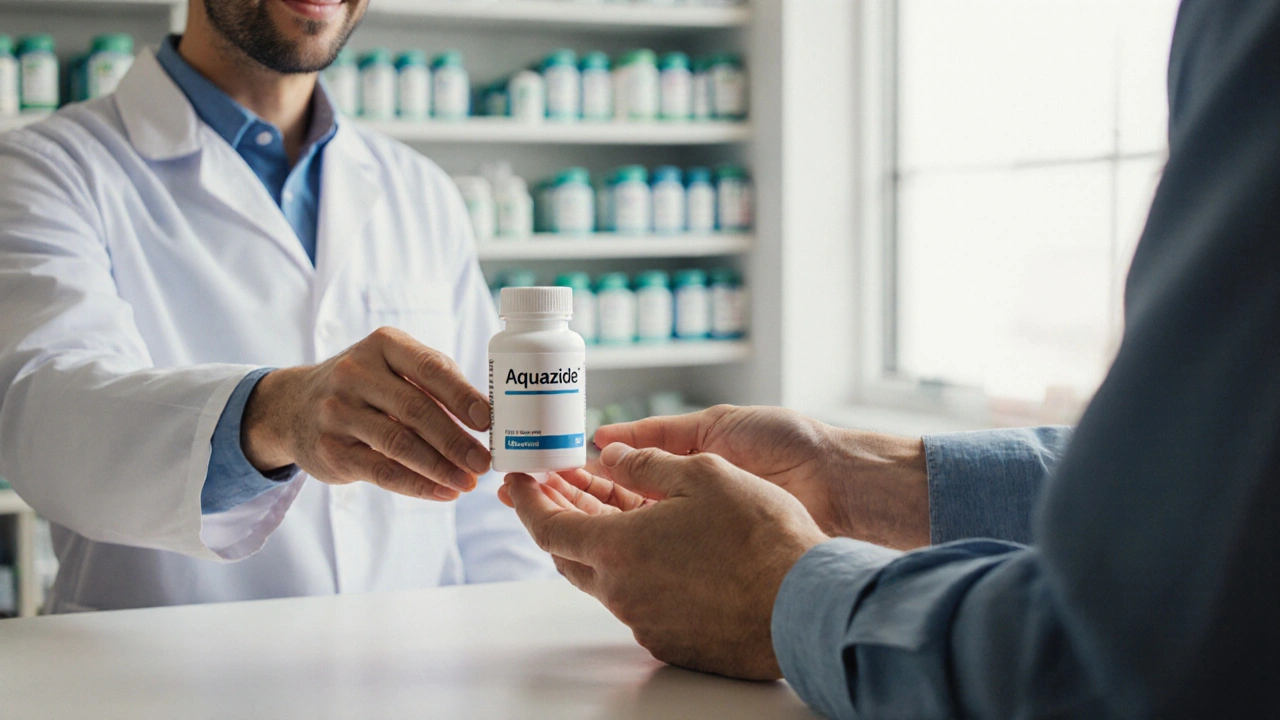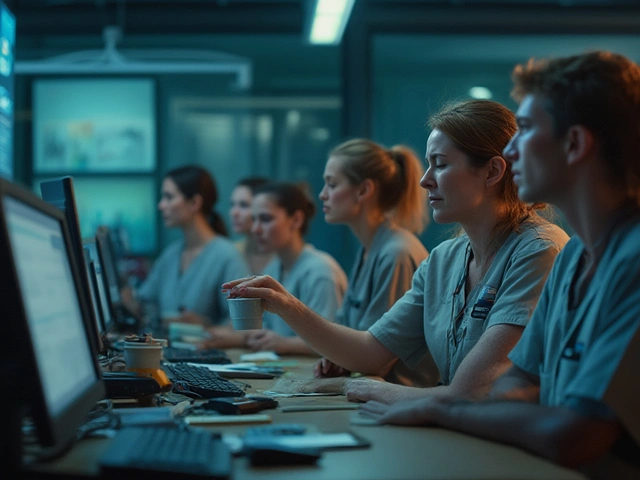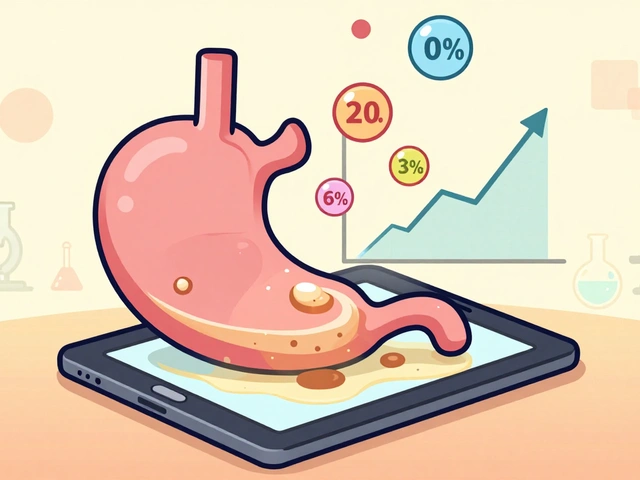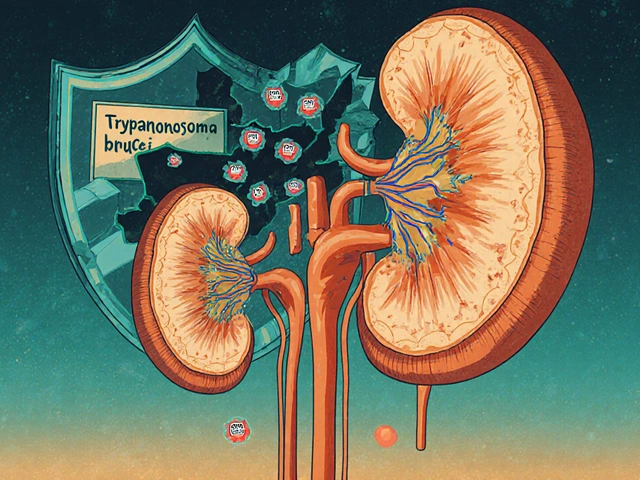Diuretic Selection Tool
Let's find the best diuretic for you
Answer these questions to see which diuretic might be most appropriate for your situation. This tool is for informational purposes only and does not replace professional medical advice.
What is your blood pressure goal?
Health considerations
Your priorities
Recommended Diuretic
This recommendation is based on your responses and the information in the article. Always discuss treatment options with your healthcare provider.
If you’ve been prescribed Aquazide, you’re probably wondering how it stacks up against other diuretics. This guide breaks down the science, the side‑effects, the cost and the best use cases so you can decide whether Aquazide - Hydrochlorothiazide - is right for you or if another option might fit better.
What is Aquazide (Hydrochlorothiazide)?
Hydrochlorothiazide is a thiazide‑type diuretic that helps the kidneys eliminate excess salt and water, lowering blood pressure and reducing fluid buildup. Marketed in Australia under the brand name Aquazide, it’s commonly prescribed for hypertension and mild to moderate edema. Typical doses range from 12.5mg to 50mg once daily, and the drug’s effect lasts about 12‑24hours, making it suitable for once‑a‑day dosing.
How Diuretics Work
A diuretic (from the Greek "diourein" meaning “to pass urine”) increases urine output by targeting different parts of the renal tubule. Thiazide diuretics like hydrochlorothiazide act on the distal convoluted tubule, blocking sodium‑chloride reabsorption. This results in less fluid in the bloodstream, which drops peripheral resistance and, consequently, blood pressure. Understanding this mechanism helps when comparing drugs that act earlier in the nephron (e.g., loop diuretics) or later (e.g., potassium‑sparing agents).
Top Alternatives to Aquazide
Below are the most frequently considered alternatives, each with its own strengths and drawbacks.
Chlorthalidone is a long‑acting thiazide‑like diuretic often touted as more potent than hydrochlorothiazide. It’s taken once daily, typically at 12.5mg‑25mg, and provides blood‑pressure control for up to 48hours.
Indapamide combines thiazide activity with vasodilatory properties, making it useful for patients who also need improved arterial flexibility. Standard doses are 1.5mg daily, with a duration of action around 24hours.
Furosemide belongs to the loop diuretic class, acting on the ascending limb of the loop of Henle to produce a very strong diuretic effect. Doses vary widely (20‑80mg), and the drug works within minutes but lasts only 6‑8hours, so it’s often used for acute fluid overload.
Spironolactone is a potassium‑sparing diuretic that antagonizes aldosterone, making it valuable for resistant hypertension and heart‑failure patients. Typical dosing is 25‑100mg once daily, with a slower onset but longer duration (up to 24hours).
Bendroflumethiazide is another thiazide‑type diuretic, slightly less potent than chlorthalidone but still more potent than hydrochlorothiazide. It’s prescribed at 2.5‑5mg daily.

Side‑Effect Profiles at a Glance
All diuretics share some common adverse effects (electrolyte imbalance, dehydration, dizziness), but the frequency and severity differ.
| Drug | Class | Typical Daily Dose | Duration of Action | Potency (BP reduction) | Common Side Effects | Average Cost (AU$ per month) | Best Use Case |
|---|---|---|---|---|---|---|---|
| Aquazide (Hydrochlorothiazide) | Thiazide | 12.5‑50mg | 12‑24h | Moderate | Low potassium, ↑ uric acid, photosensitivity | ~$8‑$12 | First‑line hypertension, mild edema |
| Chlorthalidone | Thiazide‑like | 12.5‑25mg | 24‑48h | High | Low potassium, ↑ calcium, metabolic alkalosis | ~$10‑$15 | Patients needing stronger BP control |
| Indapamide | Thiazide‑like + vasodilator | 1.5mg | ~24h | High | Less potassium loss, occasional dizziness | ~$12‑$18 | Hypertension with peripheral arterial disease |
| Furosemide | Loop | 20‑80mg | 6‑8h | Very high (fluid removal) | Low potassium, ototoxicity, dehydration | ~$6‑$10 | Acute pulmonary edema, severe heart failure |
| Spironolactone | Potassium‑sparing | 25‑100mg | ~24h | Moderate (adds aldosterone blockade) | Hyperkalemia, gynecomastia, menstrual irregularities | ~$9‑$14 | Resistant hypertension, heart failure with reduced ejection fraction |
| Bendroflumethiazide | Thiazide | 2.5‑5mg | 12‑24h | Moderate‑high | Low potassium, rash, ↑ glucose | ~$7‑$11 | Patients intolerant to hydrochlorothiazide dose escalation |
Decision Criteria: When Is Aquazide the Right Choice?
- Cost‑effectiveness: Aquazide is one of the cheapest options on the market, which matters for long‑term therapy.
- Ease of dosing: Once‑daily dosing with a broad therapeutic window reduces the risk of missed doses.
- Side‑effect tolerance: If you have a history of low potassium or gout, hydrochlorothiazide may aggravate those conditions.
- Blood‑pressure targets: For mild to moderate hypertension (systolic 140‑159mmHg), Aquazide usually achieves goal without needing a stronger thiazide‑like agent.
- Kidney function: In patients with moderate chronic kidney disease (eGFR30‑59mL/min), chlorthalidone can accumulate; Aquazide’s shorter half‑life is safer.
When Alternatives Outperform Aquazide
Even a solid first‑line drug has limits. Below are scenarios where you might switch.
- Insufficient BP control after maximized dose: Move to chlorthalidone or indapamide for extra potency.
- Frequent gout attacks: Hydrochlorothiazide raises uric acid; consider a non‑thiazide option like indapamide (lower uric‑acid effect) or a calcium‑channel blocker.
- Severe fluid overload: Loop diuretics such as furosemide are needed because thiazides cannot mobilize large volumes quickly.
- Risk of low potassium: Switch to a potassium‑sparing agent (spironolactone) or combine with a low‑dose thiazide plus potassium supplement.
- Resistant hypertension: Adding spironolactone after a thiazide‑type drug often improves control.

Practical Tips for Managing Diuretic Therapy
- Take your pill in the morning to avoid nighttime trips to the bathroom.
- Check blood pressure twice a week for the first month after any change.
- Monitor electrolytes-especially potassium and sodium-through routine blood tests.
- Stay hydrated but avoid over‑drinking; the goal is balanced fluid status.
- If you develop muscle cramps or weakness, discuss potassium‑rich foods or supplements with your doctor.
Frequently Asked Questions
Can I substitute Aquazide with another brand of hydrochlorothiazide?
Yes. All generic hydrochlorothiazide tablets contain the same active ingredient, so you can switch brands if cost or availability is an issue. However, discuss the change with your pharmacist to ensure the dosage matches exactly.
Why does Aquazide sometimes raise my blood sugar?
Thiazide diuretics can increase insulin resistance, leading to modest rises in fasting glucose. If you have pre‑diabetes, your doctor may monitor glucose levels more closely or choose a different class.
Is it safe to take Aquazide while on a low‑sodium diet?
A low‑sodium diet actually works well with diuretics, helping blood‑pressure control while reducing the risk of electrolyte imbalance. Just keep an eye on potassium levels.
How long does it take to see the blood‑pressure effect of Aquazide?
Most patients notice a drop within 2‑4 weeks of consistent dosing. Full effect may take up to 8 weeks, especially if you’re adjusting the dose.
Can I combine Aquazide with a potassium supplement?
Yes, many clinicians recommend a low‑dose potassium chloride supplement (e.g., 10‑20mEq) when you’re on a thiazide, especially if blood tests show low potassium. Always follow your doctor’s dosage instructions.
Next Steps
Choosing a diuretic isn’t one‑size‑fits‑all. Review the table, consider your personal health factors, and bring your questions to the next doctor’s appointment. If you’re already on Aquazide and feel it’s not controlling your pressure or you’re experiencing bothersome side effects, ask about switching to chlorthalidone or adding a potassium‑sparing agent. Remember, successful hypertension management is a partnership between you, your clinician, and the medication that fits your lifestyle.






Bernard Lingcod
14 October, 2025 . 21:40 PM
Hydrochlorothiazide is cheap but watch the potassium.
Freddy Torres
18 October, 2025 . 07:47 AM
Cheap is great, but if you’re low on potassium you might feel weak.
Andrew McKinnon
21 October, 2025 . 17:53 PM
Look, thiazides are like the budget smartphones of diuretics: they get the job done, but you’ll be scrolling through side‑effects like low potassium, higher uric acid, and photosensitivity. If you love the thrill of regular blood‑test trips, go ahead. Otherwise, consider a stronger thiazide‑like agent or a potassium‑sparing partner. And yes, the “once‑daily” convenience can backfire when you forget to take it and end up with a midnight bathroom sprint.
Dean Gill
25 October, 2025 . 03:59 AM
Let’s unpack why Aquazide (hydrochlorothiazide) holds its spot in the diuretic hierarchy.
First, the cost factor is undeniable – a month’s supply often slides under ten dollars, which is a blessing for long‑term adherence.
Second, its pharmacokinetics provide a reliable 12‑ to 24‑hour window, making once‑daily dosing realistic for most patients.
Third, the blood‑pressure‑lowering effect is moderate; for initial hypertension, it’s often sufficient without immediately resorting to higher‑potency agents.
However, the “moderate” label hides a few caveats.
Patients with a predisposition to gout should be cautious because thiazides can elevate serum uric acid, potentially triggering attacks.
Similarly, the drug can aggravate hypokalemia; clinicians frequently co‑prescribe potassium supplements or recommend potassium‑rich foods.
When it comes to kidney function, hydrochlorothiazide is safer than long‑acting thiazide‑like agents in moderate CKD (eGFR 30‑59), owing to its shorter half‑life and less accumulation risk.
In contrast, chlorthalidone, while more potent, can linger and cause greater electrolyte shifts in the same population.
For patients needing stronger antihypertensive power, indapamide offers a thiazide‑like effect with added vasodilatory benefits and a lower impact on uric acid.
Loop diuretics such as furosemide are reserved for acute volume overload because they can mobilize large fluid volumes quickly, something a thiazide cannot achieve.
Spironolactone, on the other hand, shines in resistant hypertension due to its aldosterone‑blocking properties, but it requires careful monitoring for hyperkalemia.
From a practical standpoint, taking Aquazide in the morning reduces nighttime bathroom trips, a simple habit that improves sleep quality.
Regular blood‑pressure monitoring-twice weekly during the first month of any dose change-is essential to gauge efficacy and adjust dosage.
Finally, patient education on signs of electrolyte imbalance (muscle cramps, weakness, irregular heartbeat) empowers individuals to seek timely medical advice.
In summary, Aquazide remains a solid first‑line option for uncomplicated hypertension, provided clinicians tailor adjunct therapy and monitoring to each patient’s risk profile.
Royberto Spencer
28 October, 2025 . 13:06 PM
Choosing cheap meds is fine until you pay with your health; ethics demand you consider side‑effects.
Annette van Dijk-Leek
31 October, 2025 . 23:12 PM
Wow! Aquazide really does the trick for many folks!! Just remember to keep an eye on those potassium levels!!!
Katherine M
4 November, 2025 . 09:18 AM
🚀 Aquazide offers a cost‑effective entry point for hypertension management, yet clinicians should remain vigilant regarding electrolyte homeostasis. 🩺
Bernard Leach
7 November, 2025 . 19:25 PM
Hydrochlorothiazide is the workhorse of thiazide diuretics; you get a decent drop in systolic pressure without the need for multiple daily doses, which is why many primary‑care providers keep it in the back pocket for newly diagnosed patients. It’s also widely available, so insurance coverage is almost guaranteed, reducing the barrier to adherence. On the flip side, its effect on serum uric acid can be problematic for gout sufferers, and the potassium‑wasting nature means you may need a supplement or dietary adjustments. The drug’s half‑life is short enough to avoid accumulation in moderate CKD, but clinicians still monitor renal function regularly. For many, the balance of cost, convenience, and efficacy makes it a reasonable first‑line choice.
Shelby Larson
11 November, 2025 . 05:31 AM
i read that hctz can raise sugar levels some peeps say it’s a big deal but honestly it’s only a modest bump. if you’re pre‑diabetic keep an extra eye on it, otherwise you’re fine.
Mark Eaton
14 November, 2025 . 15:37 PM
In practice, I’ve seen patients thrive on Aquazide when they pair it with a low‑sodium diet and regular check‑ups. The key is consistency-taking it at the same time each day reduces variability in blood‑pressure readings.
Alfred Benton
18 November, 2025 . 01:44 AM
One must consider the pharmaceutical influence behind the promotion of cheap thiazides; it is no coincidence that they dominate formulary lists while newer agents are sidelined.
Ivy Himnika
21 November, 2025 . 11:50 AM
🧐 It is essential to recognize that while Aquazide is economical, the long‑term health economics must account for potential electrolyte supplementation and monitoring costs. 📊
Nicole Tillman
24 November, 2025 . 21:56 PM
For patients with borderline hypertension, Aquazide’s modest efficacy can be a stepping stone-if it falls short, escalating to chlorthalidone or adding a calcium‑channel blocker is a sensible next move.
Sue Holten
28 November, 2025 . 08:03 AM
Sure, Aquazide is cheap, but if you’re willing to spend a few extra bucks you can avoid the potassium‑wasting drama and maybe feel better overall.
Tammie Foote
1 December, 2025 . 18:09 PM
People should remember that cost isn’t the only moral consideration; side‑effects can burden patients just as much as price.
Jason Ring
5 December, 2025 . 04:15 AM
i think its ok but the timing can be a pain if you forget it and end up posiitonins at 3am an run to the bathroom.
Neviah Abrahams
8 December, 2025 . 14:22 PM
Drama aside, Aquazide’s role in the therapeutic arsenal is as dramatic as any blockbuster-cheap, effective, and occasionally the villain when potassium drops.
felix rochas
12 December, 2025 . 00:28 AM
Observe: the medical establishment pushes low‑cost thiazides while quietly repressing data on their metabolic impact-clearly a stratagem to minimize pharmaceutical profits elsewhere!!!
inder kahlon
15 December, 2025 . 10:34 AM
Hydrochlorothiazide is a solid first‑line option; ensure renal function and electrolytes are periodically checked.
Dheeraj Mehta
18 December, 2025 . 20:40 PM
👍 Keep it simple: take it in the morning, monitor potassium, and stay consistent.